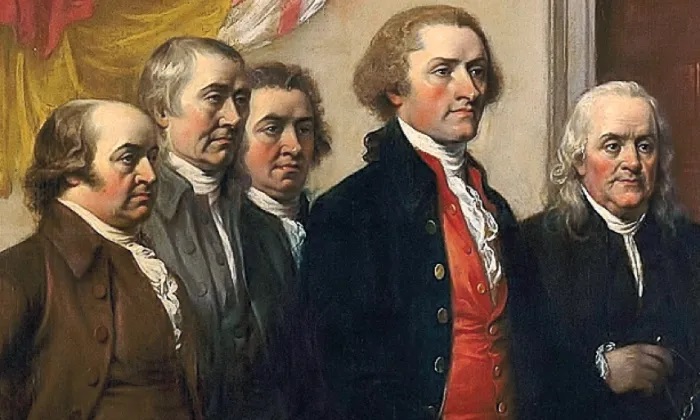Several conversations about ethics and art led me to revisit Friday’s commentary.
An article from the New York Times (Nov. 11) raised my interest about “concerns in the art world over the propriety of a coming show at the New Museum [of Contemporary Art in New York] that will feature the private collection of a museum trustee, Dakis Joannou.” Returning to The Times, I discovered a fuller statement released by the New Museum. In part, it reads.

“Through decades of informed, passionate effort and intensive dialogue with artists, Dakis Joannou has assembled one of the finest and most original collections of contemporary art in the world. This collection… has been shown in museums in Europe, but has never traveled to the United States… The New Museum is privileged that Mr. Joannou accepted the New Museum’s invitation to show his collection, rather than choosing another institution.
“This initiative is an artistically and intellectually important project consistent with our mission and vision. The New Museum has followed the highest ethical standards in creating this exhibition.”
My immediate question: what are those ethical standards? I contacted the New Museum several times by phone and e-mail requesting a copy and received no response. I looked through the museum’s web site and could not find any standards of conduct for either employees or trustees.
I contacted Robin Pogrebin, one of the author’s of the Timespiece, asking if he had seen a copy of the standards mentioned by the New Museum. “We were never provided by the New Museum with a written copy of any ethical standards” Robin said in an e-mail.
“There has been ongoing debate in the art world over the appropriateness of museums showing private collections,” Robin writes in a follow-up. “Many art professionals argue that museums would be nowhere without private collections, that these collections often end up as gifts to museums, comprising some of the highlights of an institution’s permanent collection, and that the shows offer the public the opportunity to see great artworks that would otherwise be cut off from view behind closed doors of the wealthy people who own them.
“Others argue that showing private collections violates a public trust by promoting the value of the artworks and thereby playing a role in the marketplace. In addition, some argue, museums exist to guide their visitors towards works of art that might not otherwise come to public attention, not to affirm works that already have commercial cachet.”
This brings up a good point. How would any of us have the opportunity to view the cultural richness of Van Gogh, Rembrandt, or the great 19th century English Romantic painter John Martin (The Destruction of Sodom and Gomorrah above) were it not for private patrons? I’m not pointing a finger at any collector who offers to loan some or all of their collection for the cultural benefit of the public. I do think, however, that an ethical line needs to be drawn when it comes to trustees of publically funded museums in which the patron stands to benefit financially.
So, what has been the response from readers on this issue?
“When a patron offers a museum the opportunity to display his collection,” Julia Masi writes. “It is a rare insight into how and why some artists become successful… Granted that it can cause controversy and overshadow the exhibits in nearby galleries. But, in this tough economic climate, where the cost of mounting and insuring an exhibit threatens to force admission prices to rise, relying on the kindness of collectors, trustees and art patrons may help boost ticket sales and membership.”
“If The New Museum is going to function that way,” writes Kx, “if its ‘mission and vision’ consists of serving as a high-end art boutique… why not just drop the non-profit status and change its name to something more accurate, say ‘This Space For Sale’?”
I’m disappointed in the New Museum who, on the one hand, claims to be following “the highest ethical standards,” when in fact, they cannot or will not make a copy of those standards available so that the public can read and judge for themselves.
However, there’s another more important question that comes to mind whenever any organization chooses to walk an ethically questionable path: If they are willing to put their reputation at risk for the benefit of a trustee, what else are they willing to do?
At the end of day, any organization that values its reputation needs to include the ethical dimension in their decision-making, especially if they receive public funds. Now, more than ever, perception is reality.
Comments
Leave a Comment










I’ve been following the announced exhibition consisting solely of works owned by Dakis Joannou the New York Times. I think the exhibition is also notable as it is curated by an individual outside the museum’s capable staff, Jeff Koons. Unlike most exhibition with loans from museum board members that are organized by an on staff curator or perhaps outside art-historian/curator; which suggests an arm-length detachment from the patron and the art world, Koons is a primary (and early) beneficiary of Mr. Joannou’s patronage. I suppose it is a reach to say that the exhibition would substantially benefit Koons in increasing the value of his work — as his work is already well collected, bought and sold for very rich amounts.
The exhibition is also unusual in that Mr. Joannou has not pledged or gifted some of the collection to the New Museum (which, in their defense, does not collect) but such a gift would have rationalized the exhibition substantially and, in my mind, would have been beyond reproach.
This is the case in museums across the country and is generally the accepted benchmark. Perhaps had the exhibition had it taken place at another NYC museum where Mr. Joannou had made a substantial pledge of the collection – the controversy might not have been so newsworthy on the ethics front.
When these sorts of exhibitions are handled correctly by good directors – with careful avoidance of perceived or actual conflicts, real meaningful gifts, and acknowledgement of collectors acting like collectors not sellers — there accrues a professionalism, good will and respect of the museum’s leadership, staff and Board by extension. The inverse is reason to vote with one’s patronage and membership and take flight.
It is an unfortunately simple issue. Follow the money.
I have worked in the art world for nearly 20 years. I have seen true philanthropy many times – people giving without expectation in return. But the Museum business is big business and right now I think that most museums are struggling to provide viewing and their regular services. As such, whether from a kind patron, or a board member or a trustee, the opportunity for a low cost, high quality exhibition would be irresistible. In the Museum world, the turnstile count is a measure of success. Money is not far from the front door of any Museum, fortunately Art is close behind.